Making the Unseen Visible: Glenn Grafelman
Critic Mason Riddle deconstructs the conceptual depths undergirding Glenn Grafelman's philosophically ambitious paintings--and takes issue with another prominent local critic, Mary Abbe, in the process.
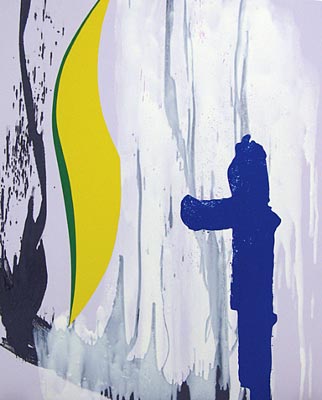
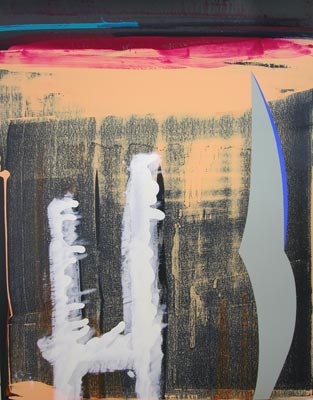
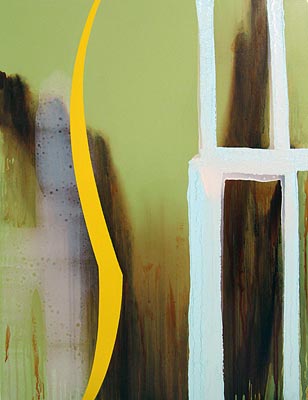
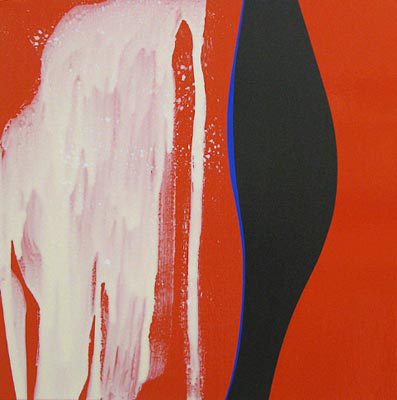
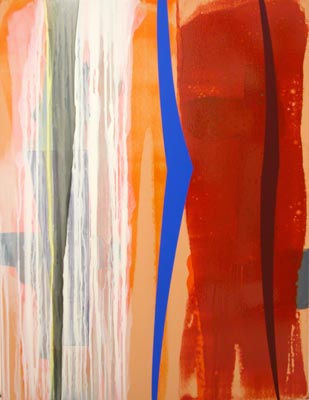
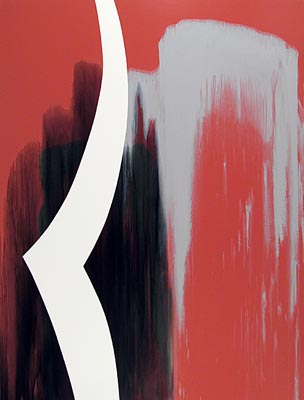

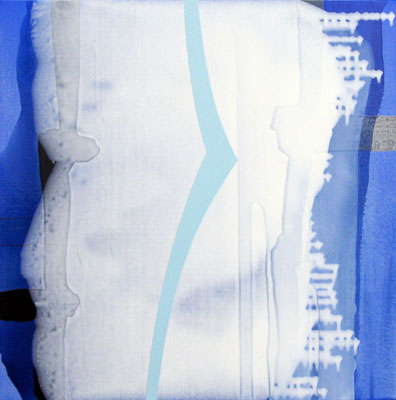
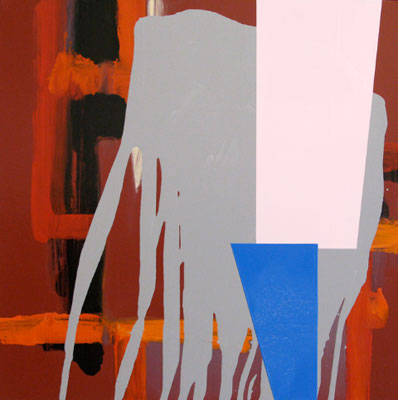
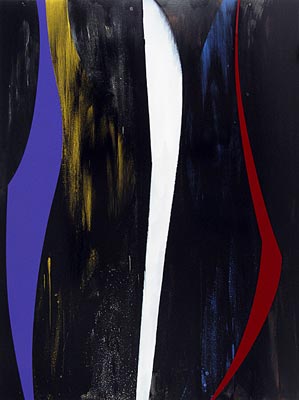
In a recent Minneapolis Star Tribune notice, writer Mary Abbe aligned Glenn Grafelmans new series of oil on canvas paintings with spin art. However deftly done, these huge canvases seem as conceptually flaccid as blown-up spin paintings, writes Abbe.
What? Did we see the same show?
Other than the deftly done part, Abbes gloss is misleading. Of the eleven vividly colored, abstract paintings on view, five are less than three-feet square. Only two approach large scale at 92 x 70 inches. The claim that these pieces are conceptually flaccid also seems ill-considered. The works explore the idea of, or belief in, transcension, that state where the electrical energy or residue of a body leaves the host container and flees elsewhere: what is commonly referred to as ghosts or spirits. This particular conceptual framework for the afterlife and its related paranormal phenomena is hardly “flaccid;” rather, it’s intellectually rigorous, if out of the mainstream subject matter.
Viewed in this light, Grafelman’s efforts to address such complex concepts through the two-dimensional medium of paint on canvas are revealed to be even more ambitious. Moreover, unless one is prepared to claim that all non-representational, vividly-hued, and gestural paintings are suggestive of “spin art,” it’s glib to lump Grafelmans work in with said art form. Spin paintings are the result of the completely random activity (something you could try yourself at the State Fair for a few dollars). In contrast, Grafelmans works are painstakingly crafted. Through a labor intensive process, he builds as many as twelve layers of primer, sealant, and oil paint, each of which is sanded down before the next coat is applied. In so doing, he creates a glossy, enamel-hard surface of saturated hues that range across the spectrum from primary colors to subtle variations of idiosyncratic shades which have yet to be named.
Grafelman, of course, is not the first to attempt to give physical form to that which is abstract, spiritual, and intangible. Over the centuries artists have grappled with representing the unknown and the unseeable. In more recent eras, the early 19th century Northern Romantic painters tried to capture notions of the spirit and transformation in psychologically dark landscape paintings. A century later, most of the Abstract Expressionists and Color Field painters sought to create work that would somehow suggest the sublime, transcendence and revelation without reliance on the conventions of symbol and representation. Barnett Newman even proposed an “art of pure idea, an art which would go beyond its own materiality and evoke a more transcendent experience. By the 1940s, the aesthetic drive to invest abstract form with psychological or spiritual meaning without the use of symbolic image or color was pervasive. The artists need to convey the breadth of human experience, not just its appearance, was palpable.
Grafelmans current work is part of this lineage. His fascination with the notion of transcensionand paranormal phenomenon like “ecto-mist” or ectoplasmbegan after photographing an empty warehouse space in a rural Minnesota town that he considered buying to use as a studio. When he downloaded the images into his computer, he realized his camera had captured a grey gauze-like substance hovering in the space, a mist that had not been visible to his naked eye in the dimly lit room. Its presence was baffling, provocative and, ultimately, stimulating.
For Grafelman, like those artists before him, the quest to paint transcension is the challenge to paint, without cliché or convention, what cannot be clearly seen or fully understood–that stuff only glimpsed out of the corner of ones eye or felt by a passing wind. That which exists at the periphery of our visual and psychological experience is what lies at the core of Grafelmans paintings. In his work the notion of transcension is represented by a long, vertical bow-like form, which may be either angular or undulating. Although non-representational, Grafelmans complex compositions and sophisticated use of color and form establish an oblique figure-ground relationship, one where the bows animated form anchors an abstract ground of gestural markings, broad passages of color, and jagged forms, reminiscent at times of Clyfford Still’s paintings.
In some of Grafelmans pieces, scale has its own power, as demonstrated in Detonator, Black Magnolia and Attis. However, a few of the smaller workssuch as Gondo, Sun Shadow, and Travelerare also compelling. In the large works, the generous scale augments the viewer’s sense of being enveloped by Grafelmans environments; on the other hand, the complex layering of visual space in the smaller pieces effectively suggests the artists metaphysical pursuits.
In light of Abbes brief and rather dismissive review, Grafelmans exhibition raises the well-worn question about whether or not it is important to be informed about the artists intent in order to understand and critique his/her work. In this case, is it necessary for the gallery visitor, let alone the critic, to have familiarity with the metaphysical concepts of transcension and the spirit, which provide both the context and the motivating force for Grafelmans current practice? Or is it enough simply to approach the work cold, evaluating it on apparent stylistic and technical merits? Grafelmans work is technically deft, as Abbe points out; and the work projects the artists skilled grasp of and investment in the physicality of painting and the material itself. But understanding the series context brings a psychological and spiritual not to mention art historical – depth to one’s reading of the work not found otherwise. And that deeper awareness of the context makes time spent with these paintings a far richer and more compelling experience than one would have if concerned solely with its stylistic qualities.
About the writer: Mason Riddle is a critic and writer on the arts, architecture, and design. She is the current president of the Visual Arts Critics Union of Minnesota.
What: Glenn Grafelman: New Paintings
Where: Thomas Barry Fine Arts Gallery, Minneapolis, MN
When: This exhibition closes Saturday, May 17, 2008
Admission is FREE and open to the public